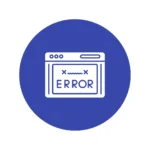
Unable to send funds to a friend who has an account at a different bank?
Don’t know how to send it? Well, that’s what we are going to discuss here.
So, how do we send funds to another person? We have account numbers, cheques, deposit slips, account holder names, and bank branches.
If you send money through Intrabank, the process is easy and requires only account details.
When it comes to interbank transactions, that is, between different banks, it may require a few other details.
These may include the IFSC code in addition to account numbers, cheque leaves, and the account holder’s name and address.
Transferring funds within the same bank is easy. Whether online or offline, it’s simple.
For online internet banking, with or without adding a beneficiary, you can send money only with the account number and name of the beneficiary.
The same goes for offline, where you present a cheque to the bank that you draw against the party to whom you are going to pay.
While making an interbank fund transfer, you may need to have an IFSC code along with the above beneficiary details.
So, what is this IFSC code? And how it enables interbank fund transfers.
What is the IFSC code?
The IFSC code is a number assigned by the Reserve Bank of India to the banks for smooth transactions among banks.
It enables the tracking of a particular transaction when there is an error or any issue with the payment.
Electronic fund transfers such as NEFT, RTGS, and IMPS require an IFSC code.
The full form of the IFSC code is the Indian Financial Service Code. It has 11 alphanumeric codes.
The code identifies the participating bank for enabling precise fund transfers.
The structure of the code is that the first 4 digits represent the bank, the last 6 digits represent the branch, and the fifth character is 0 left for future use.
So, while sending funds from a sender to the receiver, the IFSC code helps in identifying the bank and branch where the fund is going.
As an example, the IFSC code SBI, see the code of Dispur main branch SBIN0000072.
SBIN represents the bank, State Bank of India; the 5th character is 0, and the last 6 digits, which are 000072, represent the branch code.
Likewise, the IFSC code of Punjab National Bank is also the same.
See the IFSC code PUNB0028420, PUNB represents the bank, the 5th character is 0, and the last 6 characters represent the branch, which is the Punjab National Bank, Mumbai branch.
Either the IFSC code of SBI or any other bank, the code structures are all the same.
Where to find IFSC code
The code can be seen in the chequebook. To make it easy while processing cheques leave has this code imprinted.
Apart from this, you may find the MICR code, branch code, and name of the branch in your chequebook.
The other way to find the IFSC code number is through your passbook. All the code details are printed in the passbook.
For a current account holder, you may refer to the chequebook as well as the account statement. You will find the code there.
If you want to find the IFSC code with the bank details, then of course you may have to visit the bank’s website or the Reserve Bank of India.
The need for IFSC codes
Whenever you want to transfer funds between different banks, this code is required for secure transactions.
Electronic fund transfers such as RTGS, NEFT, and IMPS require an IFSC code to securely transfer funds between bank accounts.
These electronic fund transfers are maintained by the Reserve Bank of India.
RTGS
RTGS stands for Real-Time Gross Settlement. It enables real-time fund transfer settlements between banks.
You may send funds through RTGS via Internet banking as well as by visiting the bank.
Online transactions of RTGS
The online transaction requires registration of the beneficiary, which will take a few hours before you can transfer funds.
While registering beneficiary, you need to provide details such as
- Bank account number
- IFSC code number
- Beneficiary name
- Beneficiary address
Once you have given the above details, the system may take 3 to 4 hours to activate the beneficiary that you added.
Initially, there may be a limited amount that you can transfer. Say it is ₹ 1 lakh, this will be under the cooling period.
Once the cooling period is over, you might be able to send more money, as per the maximum amount capped by the bank.
Most banks keep the maximum amount at ₹ 10 lacs per personal banking.
Offline mode of RTGS transaction
You may also do RTGS transactions by visiting the banks.
Here, you may need to draw a chequebook. The offline transaction can be done only by an account payee through a cheque.
To do an RTGS fund transaction, follow the below steps:
- Draw a cheque, fill it up, and write the payee name to whom the money is to be paid.
- Get the RTGS form and fill in the required details.
- Sign in and submit to the counter. The bank will transfer your funds instantly.
NEFT
NEFT stands for National Electronic Fund Transfer. As the name suggests, it is also an electronic fund transfer handled by the RBI.
In NEFT fund transfers, the fund settlement occurs in a batch-wise manner. Batch settlement timings are given on the Reserve Bank’s official website.
So, in RTGS, the fund settlement is in real-time. It means you can send the money instantly; there is no waiting period for the funds to reach the beneficiary.
Whereas NEFT takes a few minutes to get it done successfully.
The rest are the same as RTGS. Whether online or offline, you may have to go through the same process.
It is worth knowing that, when you initiate a fund transfer through Internet banking, most banks do not charge any fees.
If you do it through the bank, they may charge you a nominal fee, which is normally shared between banks and the RBI.
IMPS
It stands for Instant Money Payment Service. As the name suggests, it is an instant payment solution. A new mode of fund transfer between banks.
It came to the banking system quite recently. The logic is the same as with NEFT and RTGS, but you may have the option to send money without even registering the beneficiary.
IMPS provides more financial freedom than RTGS and NEFT. Moreover, the payment is instantaneous.
The basic necessities are the same as with other electronic fund transfers. It requires the beneficiary account number, IFSC code, name, and address.
The problems that we have
Electronic fund transfers are great, but there are certain issues and problems that most of us face on bad days.
What if you send it to the wrong account? What if the funds get bounced back? How to confirm whether the transaction has been successfully completed?
Knowing exactly what to do and where to approach matters as it involves multiple banks, and even the bank staff are not able to confirm you on the spot.
They may give you a reference number, which is a UTR number. This Unique Transaction Reference Number will enable you to track the present status of a transaction. It is a reference number generated per transaction.
It is an alphanumeric of 14 to 16 characters. From a UTR number, you may be able to know from which bank and branch the fund originated.
In most cases, sending funds to the wrong account gets refunded the next day with the narration of an invalid account number.
But sometimes, the account you have given happens to be an existing one. The funds may not get returned, but in this case, you have to raise a written request to reverse the transaction.
In this case, you may have to provide indemnity bonds for the amount involved in the transaction.
When the funds get bounced back, there may be reasons why banks may be able to guide you properly.
Approach your banks to find out the issues.







